CT
-
 KAIST College of Life Sciences and Bioengineering Signs MOU with Harvard
KAIST’s College of Life Sciences and Bioengineering recently signed a memorandum of understanding (MOU) with Harvard University’s Center for Brain Science on July 20, which will allow for joint research and exchange in researchers between the two institutions.
Headed by Director Kenneth Blum, Harvard’s Center for Brain Science leads the world in brain-related research. The new MOU will allow for research cooperation, exchanges of professors, researchers, and students, joint usage of infrastructure and research materials, and finally, sharing of research assignments.
The Dean of the College of Life Sciences and Bioengineering Sang Yup Lee, who concerted efforts to form the MOU said, “This agreement will bring together two of the world’s leading brain-related research teams, and I hope that combining their expertise will bring great advances in brain science and engineering.
KAIST’s College of Life Science and Bioengineering, which is known for its creative interdisciplinary research, is producing exemplary research results in the field of brain science from its Biological Sciences and Bio and Brain Engineering departments.
In addition to cooperation with Harvard, KAIST has also formed partnerships with Emory University, Japan’s RIKEN Brain Institute, and Germany’s Max Planck Institute. Not only does it have a worldwide network pertaining to brain research, but KAIST has also engaged in cooperative research with prominent domestic institutions such as, Asan Medical Center, the Korea Research Institute of Bioscience and Biotechnology, the Korea Research Institute of Standards and Science, and the SK Corporation. Through these connections, KAIST has managed to lead in mutually cooperative brain interdisciplinary research.
2009.08.10 View 18229
KAIST College of Life Sciences and Bioengineering Signs MOU with Harvard
KAIST’s College of Life Sciences and Bioengineering recently signed a memorandum of understanding (MOU) with Harvard University’s Center for Brain Science on July 20, which will allow for joint research and exchange in researchers between the two institutions.
Headed by Director Kenneth Blum, Harvard’s Center for Brain Science leads the world in brain-related research. The new MOU will allow for research cooperation, exchanges of professors, researchers, and students, joint usage of infrastructure and research materials, and finally, sharing of research assignments.
The Dean of the College of Life Sciences and Bioengineering Sang Yup Lee, who concerted efforts to form the MOU said, “This agreement will bring together two of the world’s leading brain-related research teams, and I hope that combining their expertise will bring great advances in brain science and engineering.
KAIST’s College of Life Science and Bioengineering, which is known for its creative interdisciplinary research, is producing exemplary research results in the field of brain science from its Biological Sciences and Bio and Brain Engineering departments.
In addition to cooperation with Harvard, KAIST has also formed partnerships with Emory University, Japan’s RIKEN Brain Institute, and Germany’s Max Planck Institute. Not only does it have a worldwide network pertaining to brain research, but KAIST has also engaged in cooperative research with prominent domestic institutions such as, Asan Medical Center, the Korea Research Institute of Bioscience and Biotechnology, the Korea Research Institute of Standards and Science, and the SK Corporation. Through these connections, KAIST has managed to lead in mutually cooperative brain interdisciplinary research.
2009.08.10 View 18229 -
 KAIST's OLEV Best Model of Creative Growth Engine
Various models of electric vehicles designed to replace the internal combustion automobiles face significant problems as they invariably failed to overcome the limitations involving lithium battery in terms of power capacity, weight, raw materal price, recharging time and preparation of charging stations. Worst of all, the limited supply of lithium will eventually raise its price sky high when all cars use lithium batteries, and the economic value of electric cars will be lost.
KAIST"s online electric vehicle project (OLEV) seeks to resolve these fundamental problems involving electric vehicles that have so far been developed. KAIST OLEV, a project to develop a new growth engine for the nation and lead the future of global automotive industry, is an entirely new concept: the electric vehicle picks up power from underground power supplier lines through the non-contact magnetic charging method, while either running or standing. This is the first eco-friendly and economic automotive system that can resolve the problems inherent to previously-developed electric vehicles, according to the KAIST OLEV Project Center.
In February 2009, KAIST researchers first proved that up to 80 percent power conveyance is possible through a gap of 1 centimeter from the power line, and in July they successfully supplied power to a bus -- up to 60 percent across a 12 cm gap from the power line embedded in the ground -- using power supply and pick-up devices they developed. In this process, KAIST has secured the core technologies for maximizing power efficiency and minimizing the cost of installing the non-contact power supply system. KAIST has established the Online Electric Vehicle Co., Ltd., to undertake business activities related to the OLEV project, including the IPR on power supply and pick-up devices, parts and accessories and commercial promotion. A demonstration event is scheduled for Aug. 13, Thursday.
The impact of the development of the OLEV technology on the energy and environment issues and the overall economy will be enormous. In case a half of the total automobiles running in Korea, or 6 million vehicles, are replaced with OLEV, electric power produced by just two of the nation"s atomic power plants will be enough to operate them all, and the nation will be able to reduce crude oil import by 35 million barrels worth U.S.$3 billion a year (supposing $80 per barrel).
Korea"s export of OLEV units will in the future surpass the present level of overseas sale of conventional cars. When nations use online electric vehicles in large numbers, their demand for CO2-free power plants will grow. Korea has cutting-edge technology in the construction of atomic power plants. As a world leader in the area of nuclear power plant, Korea will enjoy new opportunities to contribute to the global advancement of atomic power generation as well as transportation industries.
Korea still shares a small portion of the world"s automobile market estimated to worth some 2,000 trillion Korean won. But commercialization of the OLEV technology worldwide will greatly enhance Korea"s global automotive market share. Successful development of the online electric vehicle requires preemptive investment and positive support by the government for the ultimate purpose of resolving energy and environment problems.
If and when domestic enterprises secure technological supremacy in the next generation automobile market with their online electric vehicles which will replace the 100-year-old combustion engine, it will be the most desirable shortcut to raising Korea"s international competitiveness. OLEV promises to be the model of creative growth engine in the 21st century.
2009.07.30 View 18329
KAIST's OLEV Best Model of Creative Growth Engine
Various models of electric vehicles designed to replace the internal combustion automobiles face significant problems as they invariably failed to overcome the limitations involving lithium battery in terms of power capacity, weight, raw materal price, recharging time and preparation of charging stations. Worst of all, the limited supply of lithium will eventually raise its price sky high when all cars use lithium batteries, and the economic value of electric cars will be lost.
KAIST"s online electric vehicle project (OLEV) seeks to resolve these fundamental problems involving electric vehicles that have so far been developed. KAIST OLEV, a project to develop a new growth engine for the nation and lead the future of global automotive industry, is an entirely new concept: the electric vehicle picks up power from underground power supplier lines through the non-contact magnetic charging method, while either running or standing. This is the first eco-friendly and economic automotive system that can resolve the problems inherent to previously-developed electric vehicles, according to the KAIST OLEV Project Center.
In February 2009, KAIST researchers first proved that up to 80 percent power conveyance is possible through a gap of 1 centimeter from the power line, and in July they successfully supplied power to a bus -- up to 60 percent across a 12 cm gap from the power line embedded in the ground -- using power supply and pick-up devices they developed. In this process, KAIST has secured the core technologies for maximizing power efficiency and minimizing the cost of installing the non-contact power supply system. KAIST has established the Online Electric Vehicle Co., Ltd., to undertake business activities related to the OLEV project, including the IPR on power supply and pick-up devices, parts and accessories and commercial promotion. A demonstration event is scheduled for Aug. 13, Thursday.
The impact of the development of the OLEV technology on the energy and environment issues and the overall economy will be enormous. In case a half of the total automobiles running in Korea, or 6 million vehicles, are replaced with OLEV, electric power produced by just two of the nation"s atomic power plants will be enough to operate them all, and the nation will be able to reduce crude oil import by 35 million barrels worth U.S.$3 billion a year (supposing $80 per barrel).
Korea"s export of OLEV units will in the future surpass the present level of overseas sale of conventional cars. When nations use online electric vehicles in large numbers, their demand for CO2-free power plants will grow. Korea has cutting-edge technology in the construction of atomic power plants. As a world leader in the area of nuclear power plant, Korea will enjoy new opportunities to contribute to the global advancement of atomic power generation as well as transportation industries.
Korea still shares a small portion of the world"s automobile market estimated to worth some 2,000 trillion Korean won. But commercialization of the OLEV technology worldwide will greatly enhance Korea"s global automotive market share. Successful development of the online electric vehicle requires preemptive investment and positive support by the government for the ultimate purpose of resolving energy and environment problems.
If and when domestic enterprises secure technological supremacy in the next generation automobile market with their online electric vehicles which will replace the 100-year-old combustion engine, it will be the most desirable shortcut to raising Korea"s international competitiveness. OLEV promises to be the model of creative growth engine in the 21st century.
2009.07.30 View 18329 -
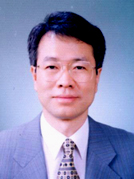 KAIST Professor Whang Turns VLDB Journal Into One of the Best in Its Field
Kyu-Young Whang, a Distinguished Professor at KAIST’s Computer Science Department, has developed The VLDB Journal into one of the world’s best journals on database technology.
Professor Whang, Editor-in-Chief of The VLDB Journal, is credited for the journal’s remarkable success evidenced by the rise of the publication’s Science Citation Index (SCI) impact factor from 3.818 to 6.8 in the period of one year. This placed the VLDB in the first place amongst 99 information systems journals and 44 hardware and architecture-related journals registered with the SCI. With only the exception of the Survey Journal, this makes The VLDB Journal the best in computer science.
The VLDB Journal is a quarterly journal published on behalf of the VLDB Endowment. The journal, launched in 1992, is dedicated to the publication of scholarly contributions to the advancement of information system architectures, the impact of technological advancements on information systems, and the development of novel database applications.
The VLDB Journal’s closest competitors in database technology, IEEE Transactions on Knowledge and Data Engineering and ACM Transactions on Database Systems, received an impact factor of 2.236 and 1.613 respectively. Comparatively, Professor Whang’s journal retains an impact factor nearly 3 to 4 times greater.
During Professor Whang’s six-year term as Editor-in-Chief, he has actively pursued the use of innovative ideas, strengthened the board of editors, standardized the length of review time, and made the journal much more accessible through the Internet. Furthermore, he drastically reduced publication time and sought a policy that focused more on the journal’s readers, which led to The VLDB Journal’s SCI impact factor rising from 1.149 (2002) to 6.8 (2008).
As one of The VLDB Journal’s founding members, Professor Whang has worked for the advancement of his journal tirelessly for 19 years with many accomplishments in database technology, including physical database design, determining the quality of a database, and the creation of a database management system. As a result, Professor Whang became the first IEEE fellow concerning domestic computer science. He is also a trustee of The VLDB Endowment, a fellow of the Korean Academy of Science and Technology, and of course, a Distinguished Professor at KAIST.
2009.07.16 View 16528
KAIST Professor Whang Turns VLDB Journal Into One of the Best in Its Field
Kyu-Young Whang, a Distinguished Professor at KAIST’s Computer Science Department, has developed The VLDB Journal into one of the world’s best journals on database technology.
Professor Whang, Editor-in-Chief of The VLDB Journal, is credited for the journal’s remarkable success evidenced by the rise of the publication’s Science Citation Index (SCI) impact factor from 3.818 to 6.8 in the period of one year. This placed the VLDB in the first place amongst 99 information systems journals and 44 hardware and architecture-related journals registered with the SCI. With only the exception of the Survey Journal, this makes The VLDB Journal the best in computer science.
The VLDB Journal is a quarterly journal published on behalf of the VLDB Endowment. The journal, launched in 1992, is dedicated to the publication of scholarly contributions to the advancement of information system architectures, the impact of technological advancements on information systems, and the development of novel database applications.
The VLDB Journal’s closest competitors in database technology, IEEE Transactions on Knowledge and Data Engineering and ACM Transactions on Database Systems, received an impact factor of 2.236 and 1.613 respectively. Comparatively, Professor Whang’s journal retains an impact factor nearly 3 to 4 times greater.
During Professor Whang’s six-year term as Editor-in-Chief, he has actively pursued the use of innovative ideas, strengthened the board of editors, standardized the length of review time, and made the journal much more accessible through the Internet. Furthermore, he drastically reduced publication time and sought a policy that focused more on the journal’s readers, which led to The VLDB Journal’s SCI impact factor rising from 1.149 (2002) to 6.8 (2008).
As one of The VLDB Journal’s founding members, Professor Whang has worked for the advancement of his journal tirelessly for 19 years with many accomplishments in database technology, including physical database design, determining the quality of a database, and the creation of a database management system. As a result, Professor Whang became the first IEEE fellow concerning domestic computer science. He is also a trustee of The VLDB Endowment, a fellow of the Korean Academy of Science and Technology, and of course, a Distinguished Professor at KAIST.
2009.07.16 View 16528 -
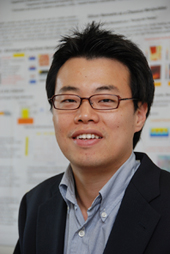 Prof. Park to Receive HP's Annual Innovation Research Award
Prof. In-Kyu Park of the Department of Mechanical Engineering, KAIST, has been will receive an award from Hewlett-Packard"s second annual Labs Innovation Research Program, university authorities said on Wednesday (July 8).
Prof. Park was chosen as the winner of the research award for his paper entitled "Eco-friendly nanomanufacturing for intelligent environment sensing applications."
Sixty projects from 46 universities in 12 countries were selected as the recipients of the awards from HP Labs, the company"s central research arm. The program is designed to create opportunities for colleges, universities and research institutes to conduct collaborative research with HP.
HP Labs Innovation Research Awards provide project funding of up to $100,000 for one year to each of the chosen academic institutions, which is renewable for up to three years based on research progress and HP business requirements.
Prof. Park has conducted joint researches on nanoimprinting, nanosensors, and nanoelectronics with HP"s Information and Quantum Systems Lab since 2005. Starting from the later half of 2009, he is to receive research grants under the industry-academia cooperation program of the world"s information technology giant firm.
2009.07.09 View 16035
Prof. Park to Receive HP's Annual Innovation Research Award
Prof. In-Kyu Park of the Department of Mechanical Engineering, KAIST, has been will receive an award from Hewlett-Packard"s second annual Labs Innovation Research Program, university authorities said on Wednesday (July 8).
Prof. Park was chosen as the winner of the research award for his paper entitled "Eco-friendly nanomanufacturing for intelligent environment sensing applications."
Sixty projects from 46 universities in 12 countries were selected as the recipients of the awards from HP Labs, the company"s central research arm. The program is designed to create opportunities for colleges, universities and research institutes to conduct collaborative research with HP.
HP Labs Innovation Research Awards provide project funding of up to $100,000 for one year to each of the chosen academic institutions, which is renewable for up to three years based on research progress and HP business requirements.
Prof. Park has conducted joint researches on nanoimprinting, nanosensors, and nanoelectronics with HP"s Information and Quantum Systems Lab since 2005. Starting from the later half of 2009, he is to receive research grants under the industry-academia cooperation program of the world"s information technology giant firm.
2009.07.09 View 16035 -
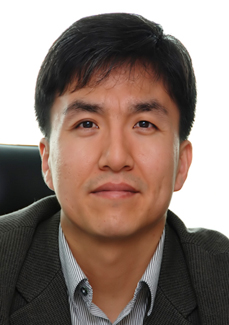 Prof. Cho Appointed Editor-in-Chief of Systems Biology Encyclopedia
Prof. Kwang-Hyun Cho of the Department of Bio and Brain Engineering, KAIST, has been appointed as the editor-in-chief of the Encyclopedia of Systems Biology which is currently in development by Springer, a New York-based publishing company, university authorities said on Monday (July 6).
Prof. Cho will share the position with three other eminent scholars from Britain, Germany and the United States. Cho will be responsible for selecting editorial members for each section of the Encyclopedia and overseeing the overall editorial process.
The Encyclopedia of Systems Biology is a multi-volume reference compilation of the research outcomes in the field of systems biology all over the world. The ESB will consist of alphabetically ordered description of systems biology concepts and is envisaged to ultimately comprise 6-12 volumes. Publication of the Encyclopedia is scheduled for 2011.
2009.07.08 View 14707
Prof. Cho Appointed Editor-in-Chief of Systems Biology Encyclopedia
Prof. Kwang-Hyun Cho of the Department of Bio and Brain Engineering, KAIST, has been appointed as the editor-in-chief of the Encyclopedia of Systems Biology which is currently in development by Springer, a New York-based publishing company, university authorities said on Monday (July 6).
Prof. Cho will share the position with three other eminent scholars from Britain, Germany and the United States. Cho will be responsible for selecting editorial members for each section of the Encyclopedia and overseeing the overall editorial process.
The Encyclopedia of Systems Biology is a multi-volume reference compilation of the research outcomes in the field of systems biology all over the world. The ESB will consist of alphabetically ordered description of systems biology concepts and is envisaged to ultimately comprise 6-12 volumes. Publication of the Encyclopedia is scheduled for 2011.
2009.07.08 View 14707 -
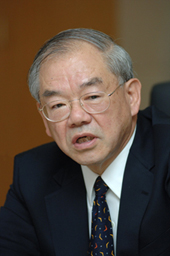 KAIST President Suh Honored with 2009 ASME Medal
KAIST President Nam-Pyo Suh has chosen as the 2009 winner of the ASME Medal presented by the American Society of Mechanical Engineers, university authorities said on Thursday (July 2).
President Suh received the honor for "seminal contributions to the advancement of engineering through research in tribology, polymer processing, metal processing, design and manufacturing, as well as contributions to engineering education and research infrastructure."
The selection of President Suh was unanimously approved by the 13-member Board of Governors of the ASME. Suh became the first scientist of Asian descent in the award"s 89-year-long history.
Founded in 1880, the ASME is a non-profit professional organization promoting the art, science and practice of mechanical and multidisciplinary engineering and allied sciences. The organization is known for setting codes and standards for mechanical devices. As of 2009, it has 120,000 members worldwide.
Only one ASME medal is awarded annually to recognize "eminently distinguished achievement." The award consists of a $17,000 honorarium, a gold medal, certificate and travel supplement for two days. It will be presented to President Suh during the 2009 International Mechanical Engineering Congress and Exposition, which will be held in Lake Buena Vista, Florida, November 13-10, 2009.
President Suh is an internationally known educator, engineer and inventor. Born in Korea, he immigrated to the U.S. in 1954 to join his father, who was teaching at Harvard. He earned both his bachelor"s and master"s degrees from MIT before coming to Carnegie Tech for his doctoral education in mechanical engineering.
While teaching at MIT, he founded the MIT-Industry Polymer Processing Program in 1973 and the Laboratory for Manufacturing and Productivity. He left these positions in 1984 to serve with the U.S. National Science Foundation as its assistant director for engineering, until 1988.
He invented many new materials, products and manufacturing processes, earning more than 60 U. S. patents and founding several companies. He has written seven books and more than 300 scholarly papers. Among dozens of honors throughout his career, President Suh most recently received the 2007 Lifetime Achievement from the Society of Plastics Engineers.
The ASME conducts one of the world"s largest technical publishing operations through its ASME Press, holds numerous technical conferences and hundreds of professional development courses each year, and sponsors numerous outreach and educational programs.
2009.07.02 View 15046
KAIST President Suh Honored with 2009 ASME Medal
KAIST President Nam-Pyo Suh has chosen as the 2009 winner of the ASME Medal presented by the American Society of Mechanical Engineers, university authorities said on Thursday (July 2).
President Suh received the honor for "seminal contributions to the advancement of engineering through research in tribology, polymer processing, metal processing, design and manufacturing, as well as contributions to engineering education and research infrastructure."
The selection of President Suh was unanimously approved by the 13-member Board of Governors of the ASME. Suh became the first scientist of Asian descent in the award"s 89-year-long history.
Founded in 1880, the ASME is a non-profit professional organization promoting the art, science and practice of mechanical and multidisciplinary engineering and allied sciences. The organization is known for setting codes and standards for mechanical devices. As of 2009, it has 120,000 members worldwide.
Only one ASME medal is awarded annually to recognize "eminently distinguished achievement." The award consists of a $17,000 honorarium, a gold medal, certificate and travel supplement for two days. It will be presented to President Suh during the 2009 International Mechanical Engineering Congress and Exposition, which will be held in Lake Buena Vista, Florida, November 13-10, 2009.
President Suh is an internationally known educator, engineer and inventor. Born in Korea, he immigrated to the U.S. in 1954 to join his father, who was teaching at Harvard. He earned both his bachelor"s and master"s degrees from MIT before coming to Carnegie Tech for his doctoral education in mechanical engineering.
While teaching at MIT, he founded the MIT-Industry Polymer Processing Program in 1973 and the Laboratory for Manufacturing and Productivity. He left these positions in 1984 to serve with the U.S. National Science Foundation as its assistant director for engineering, until 1988.
He invented many new materials, products and manufacturing processes, earning more than 60 U. S. patents and founding several companies. He has written seven books and more than 300 scholarly papers. Among dozens of honors throughout his career, President Suh most recently received the 2007 Lifetime Achievement from the Society of Plastics Engineers.
The ASME conducts one of the world"s largest technical publishing operations through its ASME Press, holds numerous technical conferences and hundreds of professional development courses each year, and sponsors numerous outreach and educational programs.
2009.07.02 View 15046 -
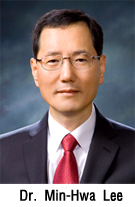 Lecture Hall Named After Venture Businessman Min-Hwa Lee
A lecture hall in the Alumni Start-Up Building on the KAIST campus was named Min-Hwa Lee Hall in a ceremony on Tuesday to pay tribute to KAIST alumnus Min-Hwa Lee"s contributions to the development of Korean venture business.
On hand at the ceremony were Sung-Woo Hong, head of the Small and Medium Business Administration, KAIST President Nam-Pyo Suh, dozens of KAIST alumni representatives, and figures from government research institutes.
Lee, who obtained his M.S. (1978) and Ph.D. (1985) in Electrical Engineering from KAIST, established a fund of 10 billion won along with other KAIST alumni in 2001 and donated it for the construction of the Alumni Start-Up Building for aspiring entrepreneurs. To remember his lofty vision, KAIST decided to name a lecture hall after him.
As a venture businessman, Lee founded the Madison, Ltd., one of the earliest venture companies in Korea, in 1985. Lee then played a leading role in the creation of the Korea Venture Industry Association in 1995, and in the establishment of KOSDAQ and the enactment of a special law for venture enterprises.
KAIST will appoint Lee as an adjunct professor in recognition of his expertise in venture business and commercialization of new inventions. Lee will teach entrepreneurship at the Graduate School of Management and the Institute for Gifted Students, a KAIST affiliate.
"Dr. Lee has made a great contribution to the development of Korean venture business. At a time when commercialization of new inventions was at an infant stage, he nurtured technology ventures and built the foundation for the proliferation of technology venture," President Suh said. "We expect that he will strive to open the generation of technologies which will lead the development of Korea in the future and become a mentor of aspiring entrepreneurs," Suh added.
2009.06.30 View 17147
Lecture Hall Named After Venture Businessman Min-Hwa Lee
A lecture hall in the Alumni Start-Up Building on the KAIST campus was named Min-Hwa Lee Hall in a ceremony on Tuesday to pay tribute to KAIST alumnus Min-Hwa Lee"s contributions to the development of Korean venture business.
On hand at the ceremony were Sung-Woo Hong, head of the Small and Medium Business Administration, KAIST President Nam-Pyo Suh, dozens of KAIST alumni representatives, and figures from government research institutes.
Lee, who obtained his M.S. (1978) and Ph.D. (1985) in Electrical Engineering from KAIST, established a fund of 10 billion won along with other KAIST alumni in 2001 and donated it for the construction of the Alumni Start-Up Building for aspiring entrepreneurs. To remember his lofty vision, KAIST decided to name a lecture hall after him.
As a venture businessman, Lee founded the Madison, Ltd., one of the earliest venture companies in Korea, in 1985. Lee then played a leading role in the creation of the Korea Venture Industry Association in 1995, and in the establishment of KOSDAQ and the enactment of a special law for venture enterprises.
KAIST will appoint Lee as an adjunct professor in recognition of his expertise in venture business and commercialization of new inventions. Lee will teach entrepreneurship at the Graduate School of Management and the Institute for Gifted Students, a KAIST affiliate.
"Dr. Lee has made a great contribution to the development of Korean venture business. At a time when commercialization of new inventions was at an infant stage, he nurtured technology ventures and built the foundation for the proliferation of technology venture," President Suh said. "We expect that he will strive to open the generation of technologies which will lead the development of Korea in the future and become a mentor of aspiring entrepreneurs," Suh added.
2009.06.30 View 17147 -
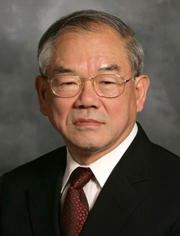 President Suh Speaks on Innovation in Asia at Glion Colloquium
KAIST President Nam-Pyo Suh stressed the importance of innovation in economic advancement in an address he delivered at the Glion Colloquium held in Glion, Switzerland, university authorities said on Wednesday (June 24).
In the speech, entitled "On Innovation Strategies: An Asian Perspective," President Suh said that for Asian countries such as China, Japan, Korea and Taiwan to continue to compete in the global economy, they must become innovators.
Over the past decade the Glion Colloquium organized by the University of Geneva has established itself as an influential international forum on higher education issues, related to research intensive universities in particular.
When it was launched in 1998, the Glion Colloquium immediately drew worldwide attention with “The Glion Declaration: the University at the Millennium,” prepared for the 1998 Paris UNESCO World Conference on Higher Education in the 21st Century.
Every two years, the colloquium brings together in Glion, Switzerland, leaders from renowned universities and higher education organizations, along with influential business and government figures, from North America, Europe and other parts of the world.
2009.06.25 View 11606
President Suh Speaks on Innovation in Asia at Glion Colloquium
KAIST President Nam-Pyo Suh stressed the importance of innovation in economic advancement in an address he delivered at the Glion Colloquium held in Glion, Switzerland, university authorities said on Wednesday (June 24).
In the speech, entitled "On Innovation Strategies: An Asian Perspective," President Suh said that for Asian countries such as China, Japan, Korea and Taiwan to continue to compete in the global economy, they must become innovators.
Over the past decade the Glion Colloquium organized by the University of Geneva has established itself as an influential international forum on higher education issues, related to research intensive universities in particular.
When it was launched in 1998, the Glion Colloquium immediately drew worldwide attention with “The Glion Declaration: the University at the Millennium,” prepared for the 1998 Paris UNESCO World Conference on Higher Education in the 21st Century.
Every two years, the colloquium brings together in Glion, Switzerland, leaders from renowned universities and higher education organizations, along with influential business and government figures, from North America, Europe and other parts of the world.
2009.06.25 View 11606 -
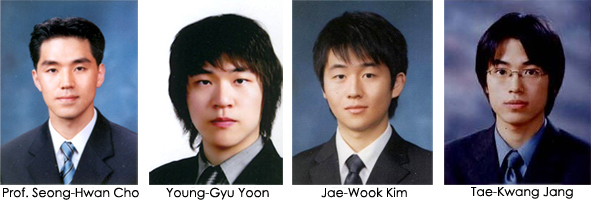 Prof. Cho's Team Awarded Best Paper Prize by IEEE
A team led by Prof. Seong-Hwan Cho of the School of Electrical Engineering and Computer Science, KAIST, won the 2009 Guillemin-Cauer Best Paper Award for their paper published in the IEEE Transactions on Circuits and Systems Journal last May, university authorities said on Thursday (June 4).
The team"s paper was entitled "A Time-based Bandpass ADC Using Time-Interleaved Voltage-Controlled Oscillators." The prize is given to a paper regarded as the best among about 350 papers published in the prestigious journal in the circuit theory area. Co-recipients of the award are Young-Gyu Yoon, Jae-Wook Kim and Tae-Kwang Jang. The award was presented at the annual 2009 International Symposium for Circuits and Systems in Taipei, Taiwan, on May 26.
The Institute of Electrical and Electronics Engineers or IEEE is an international non-profit, professional organization for the advancement of technology related to electricity. The New York-based organization has more than 365,000 members in about 150 countries making it the largest technical professional organization in the world.
2009.06.05 View 15309
Prof. Cho's Team Awarded Best Paper Prize by IEEE
A team led by Prof. Seong-Hwan Cho of the School of Electrical Engineering and Computer Science, KAIST, won the 2009 Guillemin-Cauer Best Paper Award for their paper published in the IEEE Transactions on Circuits and Systems Journal last May, university authorities said on Thursday (June 4).
The team"s paper was entitled "A Time-based Bandpass ADC Using Time-Interleaved Voltage-Controlled Oscillators." The prize is given to a paper regarded as the best among about 350 papers published in the prestigious journal in the circuit theory area. Co-recipients of the award are Young-Gyu Yoon, Jae-Wook Kim and Tae-Kwang Jang. The award was presented at the annual 2009 International Symposium for Circuits and Systems in Taipei, Taiwan, on May 26.
The Institute of Electrical and Electronics Engineers or IEEE is an international non-profit, professional organization for the advancement of technology related to electricity. The New York-based organization has more than 365,000 members in about 150 countries making it the largest technical professional organization in the world.
2009.06.05 View 15309 -
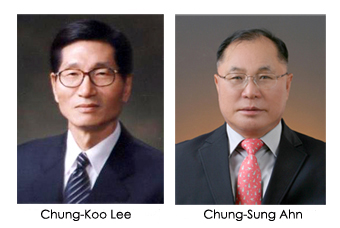 KAIST Appoints Two CEOs for Promotion of Innovative Projects
KAIST has appointed chief executive officers (CEO) for the two companies KAIST has recently established to carry out two innovative "low-carbon, green growth projects" supported by the Korean government, university authorities said on Monday (June 2).
Chung-Sung Ahn, a former executive of Hyundai Heavy Industries Co., a top shipbuilder of the world, was appointed as the CEO of the Mobile Harbor Co., and Chung-Koo Lee, a former president of Hyundai Motor Co., as CEO of the On-Line Electric Car Co.
The two companies have been newly established for the commercial operation of the mobile harbor and on-line electric car projects that KAIST has been working on.
KAIST has developed a plan to power electric cars through re-charging strips embedded in roadways. The university has built a prototype on its campus for electric-powered golf carts and worked on designs that would power cars and buses.
The mobile harbor system is motivated by a growing need for an innovative container transport service system to effectively meet continuing increase in global container shipping volume, KAIST has developed a system that can unload containers from a containership to a floating harbor in the sea and deliver them to a land terminal and load cargoes in a reverse way.
The 71-year-old Ahn of the Mobile Harbor Co. served as the president of the Offshore & Engineering Division and the Industrial Plant & Engineering Division of Hyundai Heavy Industries Co. from 2003 to 2005. He completed Advanced Management Program (AMP) from Harvard Business School in 1990. Ahn obtained Ph.D. in ocean engineering from MIT in 1972, M.S. in naval architecture from MIT in 1969, M.S. in meteorology/oceanography from MIT in 1967 and B.S. in Maritime Science from Korea Maritime University in 1959.
Chung-Koo Lee, 64, served as president of Hyundai Motor Co. from 1992 to 2002 and as a member of the Presidential Advisory Council on Science and Technology from 2001 to 2003.
2009.06.05 View 12689
KAIST Appoints Two CEOs for Promotion of Innovative Projects
KAIST has appointed chief executive officers (CEO) for the two companies KAIST has recently established to carry out two innovative "low-carbon, green growth projects" supported by the Korean government, university authorities said on Monday (June 2).
Chung-Sung Ahn, a former executive of Hyundai Heavy Industries Co., a top shipbuilder of the world, was appointed as the CEO of the Mobile Harbor Co., and Chung-Koo Lee, a former president of Hyundai Motor Co., as CEO of the On-Line Electric Car Co.
The two companies have been newly established for the commercial operation of the mobile harbor and on-line electric car projects that KAIST has been working on.
KAIST has developed a plan to power electric cars through re-charging strips embedded in roadways. The university has built a prototype on its campus for electric-powered golf carts and worked on designs that would power cars and buses.
The mobile harbor system is motivated by a growing need for an innovative container transport service system to effectively meet continuing increase in global container shipping volume, KAIST has developed a system that can unload containers from a containership to a floating harbor in the sea and deliver them to a land terminal and load cargoes in a reverse way.
The 71-year-old Ahn of the Mobile Harbor Co. served as the president of the Offshore & Engineering Division and the Industrial Plant & Engineering Division of Hyundai Heavy Industries Co. from 2003 to 2005. He completed Advanced Management Program (AMP) from Harvard Business School in 1990. Ahn obtained Ph.D. in ocean engineering from MIT in 1972, M.S. in naval architecture from MIT in 1969, M.S. in meteorology/oceanography from MIT in 1967 and B.S. in Maritime Science from Korea Maritime University in 1959.
Chung-Koo Lee, 64, served as president of Hyundai Motor Co. from 1992 to 2002 and as a member of the Presidential Advisory Council on Science and Technology from 2001 to 2003.
2009.06.05 View 12689 -
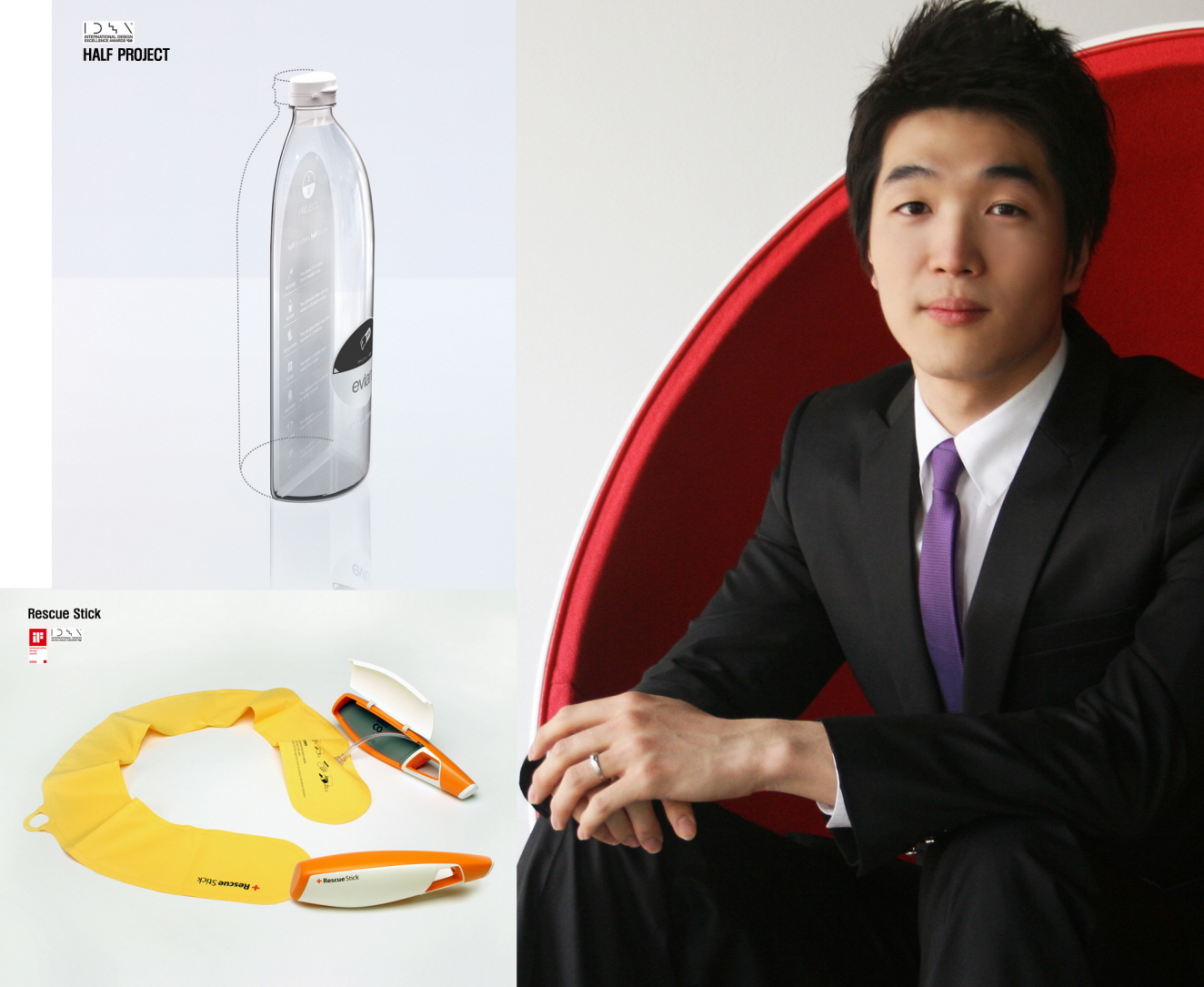 KAIST Senior Wins Prizes at International Design Contests
Sung-Joon Kim, a senior at the Department of Industrial Design, KAIST, has recently won the highest prize at the iF Communication Design Award held in Hanover, Germany, university officials said on Monday (June 3).
The prizewinning work entitled "1/2 PROJECT" introduces a donation system in which a customer buys a bottle of drink, for example, containing only a half of its price value and donate the remaining half of the value. The work which was created as part of the Samsung Design Membership was also awarded a silver prize at the International Design Excellence Awards (IDEA) of the United States.
Award ceremonies of the two prizes are scheduled for in Muenchen in August and in Miami in September, respectively.
"The design project is aimed at making donation a part of everyday life by teaming up with big-name beverage makers," said Kim.
iF Communication Design Award and the IDEA are among the world"s three leading international design competitions. The other one is the Red Dot Design Award presented in Essen, Germany.
Early this year, Kim, leading a team, presented a portable life saving equipment called "Rescue Stick" to the two competitions and won high honors.
2009.06.05 View 15773
KAIST Senior Wins Prizes at International Design Contests
Sung-Joon Kim, a senior at the Department of Industrial Design, KAIST, has recently won the highest prize at the iF Communication Design Award held in Hanover, Germany, university officials said on Monday (June 3).
The prizewinning work entitled "1/2 PROJECT" introduces a donation system in which a customer buys a bottle of drink, for example, containing only a half of its price value and donate the remaining half of the value. The work which was created as part of the Samsung Design Membership was also awarded a silver prize at the International Design Excellence Awards (IDEA) of the United States.
Award ceremonies of the two prizes are scheduled for in Muenchen in August and in Miami in September, respectively.
"The design project is aimed at making donation a part of everyday life by teaming up with big-name beverage makers," said Kim.
iF Communication Design Award and the IDEA are among the world"s three leading international design competitions. The other one is the Red Dot Design Award presented in Essen, Germany.
Early this year, Kim, leading a team, presented a portable life saving equipment called "Rescue Stick" to the two competitions and won high honors.
2009.06.05 View 15773 -
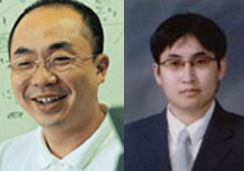 Prof. Chong Unveils New Human Movement Model
A KAIST research team headed by Prof. Song Chong of the School of Electrical Engineering and Computer Science has developed a new statistical model that simulates human mobility patterns, mimicking the way people move over the course of a day, a month or longer, university sources said on Tuesday (May 12).
The model, developed in collaboration with scientists at North Carolina State University, is the first to represent the regular movement patterns of humans using statistical data.
The model has a variety of potential uses, ranging from land use planning to public health studies on epidemic disease.
The researchers gave global positioning system (GPS) devices to approximately 100 volunteers at five locations in the U.S. and South Korea and tracked the participants" movements over time. By tracing the points where the study participants stopped, and their movement trajectories, researchers were able to determine patterns of mobility behavior.
The researchers were then able to emulate these fundamental statistical properties of human mobility into a model that could be used to represent the regular daily movement of humans. The model, called Self-similar Least Action Walk (SLAW), will have a wide array of practical applications.
The research, "SLAW: A Mobility Model for Human Walks," was presented on April 20 at the 28th IEEE Conference on Computer Communications in Rio de Janeiro, Brazil. The National Science Foundation of the U.S. funded the research.
2009.05.13 View 15297
Prof. Chong Unveils New Human Movement Model
A KAIST research team headed by Prof. Song Chong of the School of Electrical Engineering and Computer Science has developed a new statistical model that simulates human mobility patterns, mimicking the way people move over the course of a day, a month or longer, university sources said on Tuesday (May 12).
The model, developed in collaboration with scientists at North Carolina State University, is the first to represent the regular movement patterns of humans using statistical data.
The model has a variety of potential uses, ranging from land use planning to public health studies on epidemic disease.
The researchers gave global positioning system (GPS) devices to approximately 100 volunteers at five locations in the U.S. and South Korea and tracked the participants" movements over time. By tracing the points where the study participants stopped, and their movement trajectories, researchers were able to determine patterns of mobility behavior.
The researchers were then able to emulate these fundamental statistical properties of human mobility into a model that could be used to represent the regular daily movement of humans. The model, called Self-similar Least Action Walk (SLAW), will have a wide array of practical applications.
The research, "SLAW: A Mobility Model for Human Walks," was presented on April 20 at the 28th IEEE Conference on Computer Communications in Rio de Janeiro, Brazil. The National Science Foundation of the U.S. funded the research.
2009.05.13 View 15297